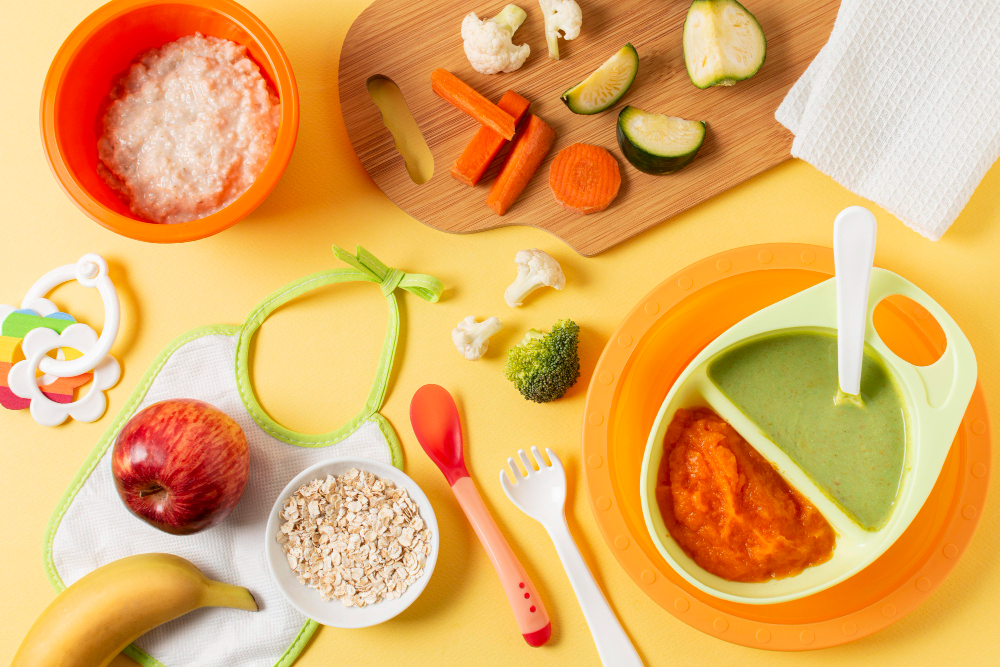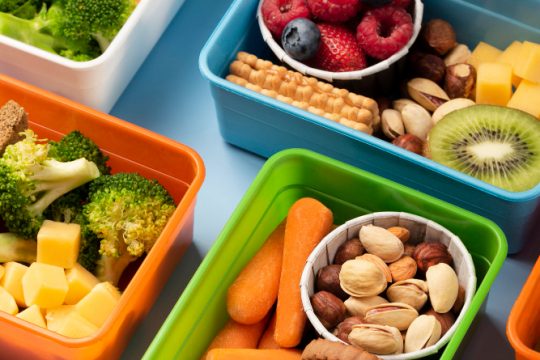Healthy Nursery in Glasgow Food Menu Ideas
Discovering delightful and nutritious food options for young children can be a challenge, especially for busy parents and caregivers.
Nursery in Glasgow food menu ideas is dedicated to providing innovative and healthy menu solutions for little ones. Our focus extends to nurseries, particularly those seeking fresh culinary inspiration, like a nursery in Glasgow, ensuring the meals served are both appealing and beneficial for growing children.
Our content is tailored to meet the needs of young, developing palates, combining fun and flavour with the necessary nutritional value. Whether you’re a
parents of children, a nursery worker, or simply interested in the art of creating enjoyable meals for children, this platform is your go-to resource. We understand the unique dietary requirements of young children and the importance of instilling good eating habits early on.
Each post offers a variety of ideas, from easy-to-prepare snacks to well-balanced lunches, all designed to cater to the tastes and health needs of children. We believe that mealtime should be an enjoyable experience for children, one that encourages a positive relationship with food.
Join our journey as we explore a world of tasty, wholesome, and child-friendly meals, perfect for any nursery in Glasgow or beyond. Our mission is to transform the typical nursery menu into an exciting culinary adventure that supports the growth and development of every child.
| Day |
Breakfast |
Snack |
Lunch |
Afternoon Snack |
| Monday |
Whole-grain porridge with fruit |
Sliced apples and cheese |
Turkey and vegetable wraps |
Cucumber sticks and hummus |
| Tuesday |
Scrambled eggs on wholemeal toast |
Banana and yogurt |
Lentil and vegetable soup |
Rice cakes with almond butter |
| Wednesday |
Fruit smoothie with oats |
Carrot sticks and guacamole |
Grilled chicken and couscous |
Mixed berries and cream |
| Thursday |
Pancakes with honey and banana |
Raisins and oat biscuits |
Fish fingers and peas |
Mini cheese and fruit skewers |
| Friday |
Yogurt with granola and berries |
Vegetable sticks and dip |
Macaroni and cheese with broccoli |
Homemade fruit muffins |
Fresh and Creative Nursery Food Menu Ideas

Parents understandably want their children to
eat nutritious meals at the nursery. In addition, menus should reflect cultural diversity.
Nursery in Glasgow staff must also wear sterile clothing and hold a valid
Food Hygiene Certificate, without using nail polish and without cuts and spots on their bodies, when handling food.
How to prepare and store food
Staff preparing and storing food in a nursery environment must follow best practices in regards to the storage of all foods. This means avoiding keeping them close together, as this may spread food poisoning organisms, and at an optimal temperature to avoid spoilage.
Staff must receive proper training on how to safely handle food, as the spread of pathogens could put children in their nursery at serious risk of illness. Furthermore, staff should know what foods can or cannot be consumed by particular children in order to maximise safety at nursery facilities.
The nursery must also ensure their specialist needs for each child are known by using individual care plans and toothpick flags to indicate food allergies, dietary restrictions, or cultural preferences.
What is food hygiene for nursery class?
Nursery staff must understand and implement food hygiene guidelines properly in their work, particularly as young children are more vulnerable to infections than adults and may develop food allergies more readily than adults do. According to the UK’s Food Standards Agency regulations, any nursery serving meals, snacks, or beverages to children must have an effective food safety policy; failing this requirement could result in registration cancellation and significant legal consequences.
One way a nursery can ensure high food hygiene standards is by having all staff complete a Level 2 food hygiene course online, which provides verifiable certificates. This course covers topics like food-borne pathogens, risk assessment procedures, cleaning and disinfection practices and how to avoid cross-contamination.
Nursery workers should also adhere to proper handwashing techniques. This means using antibacterial soap for 20 seconds to thoroughly cover all parts of their hands, including between fingers, the back of the hand and under nails. Also, using clean paper towels to dry their hands ensures any bacteria don’t transfer to food or people.
One effective way for nurseries to ensure improved food hygiene is to clearly label all raw and ready-to-eat foods separately, thus minimising cross-contamination risk and food poisoning risk. Furthermore, nursery workers should never serve contaminated food; such actions could put children’s health at risk and harm the nursery’s reputation.
A nursery should ensure its staff wear clothing suitable for working with food, including no jewellery or nail polish and secure hair tying. Injuries such as cuts or abrasions must also be covered to prevent germs from entering and then contaminating food products.
Nursery workers should also be mindful that handling food when sick can spread viruses such as norovirus. Furthermore, it is advised they refrain from returning to work until all symptoms have subsided before returning.
Getting children involved in food preparation
Children are exposed to many different foods from an early age, which can impact their diet for the rest of their lives. Therefore, nurseries should offer an assortment of
healthy food products in order to ensure children receive all necessary nutrition.
Food-wise, one of the best ways to engage kids is through food preparation activities. Even helping out by pouring, stirring, or picking ingredients can engage them and make their mealtime experience more exciting (
van der Horst et al. 2014). Plus, involvement can actually increase vegetable and fruit consumption (van der Horst et al.).
Preparing food can be an enjoyable and engaging activity for children, providing an opportunity to teach them about cooking and nutrition and foster an adventurous dining culture in their future.
Engaging kids in food prep has many other advantages, including helping them understand math and science concepts. Kids can learn how to sort ingredients by colour or size, count, and measure ingredients; this allows for advanced math development as well as improved motor coordination skills.
Maintain a varied menu cycle to ensure children don’t eat the same meals over and over, and try using seasonal foods when possible.
Children’s nutrition is key to their growth and learning. A nutritious nursery menu should consist of fruits, vegetables, proteins, and carbohydrates for maximum impact in helping children maintain a healthy weight while decreasing the risk of early childhood obesity.
Getting children to eat the right foods
Food intake at the nursery can have an enormous impact on children’s eating habits and long-term health. Unfortunately, however, with most parents working full-time and their children spending so much of their time in care settings without much say over what is consumed, this makes it all the more essential that nurseries understand dietary requirements and provide nutritious meals and snacks to their customers.
One effective way of encouraging children to eat nutritious food is by making mealtimes fun. This could mean giving vegetables funny names, such as “X-Ray Vision Carrots or Power Peas,” arranging colours in rainbow fashion on their plates, or using cookie cutters to cut new foods into simple shapes. Staff could even get involved by eating with the children at mealtimes, as this provides positive role modelling, which should also be followed at home.
As with any meal or snack, it is also essential that children experience a range of flavours when dining together. This can be achieved by offering new foods at various points during the day, providing multiple meal or snack choices and offering meals with both mild and strong tastes. When it comes to fat or salt intake, roasting, grilling, steaming, or boiling can all provide great alternatives with healthier outcomes for their meals.
One way to encourage children to eat healthily is to give them the opportunity to grow, plant, and harvest their own fruit and vegetables. This can teach children where their food comes from and how it grows, providing an educational lesson at mealtimes!
Plan menus over multiple weeks whenever possible to ensure children receive plenty of dietary variety while collecting information from families to better understand each child’s individual requirements.

 Parents understandably want their children to eat nutritious meals at the nursery. In addition, menus should reflect cultural diversity.
Nursery in Glasgow staff must also wear sterile clothing and hold a valid Food Hygiene Certificate, without using nail polish and without cuts and spots on their bodies, when handling food.
Parents understandably want their children to eat nutritious meals at the nursery. In addition, menus should reflect cultural diversity.
Nursery in Glasgow staff must also wear sterile clothing and hold a valid Food Hygiene Certificate, without using nail polish and without cuts and spots on their bodies, when handling food.


